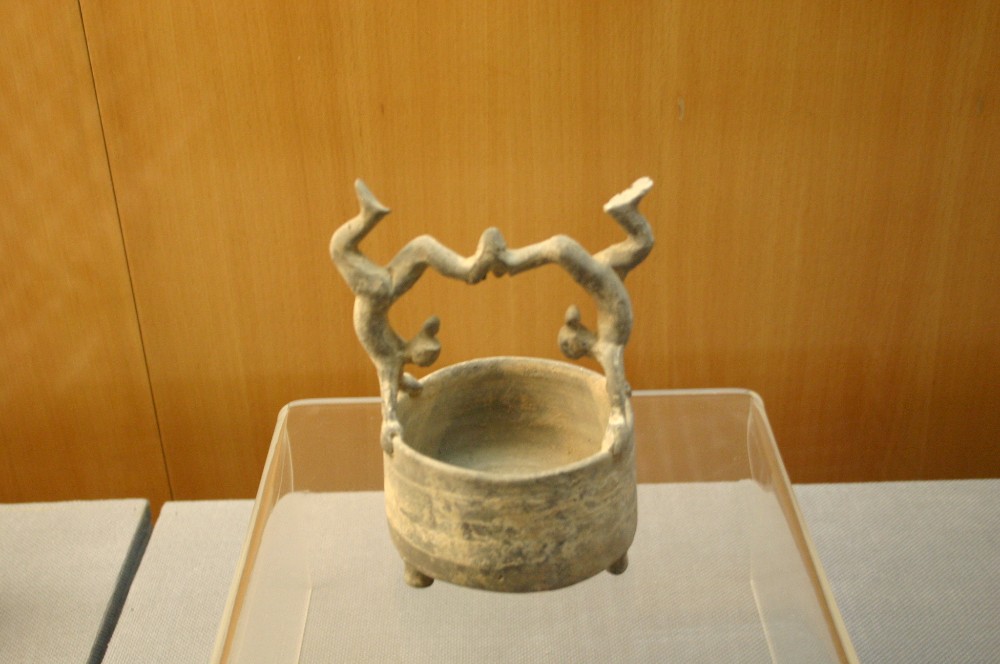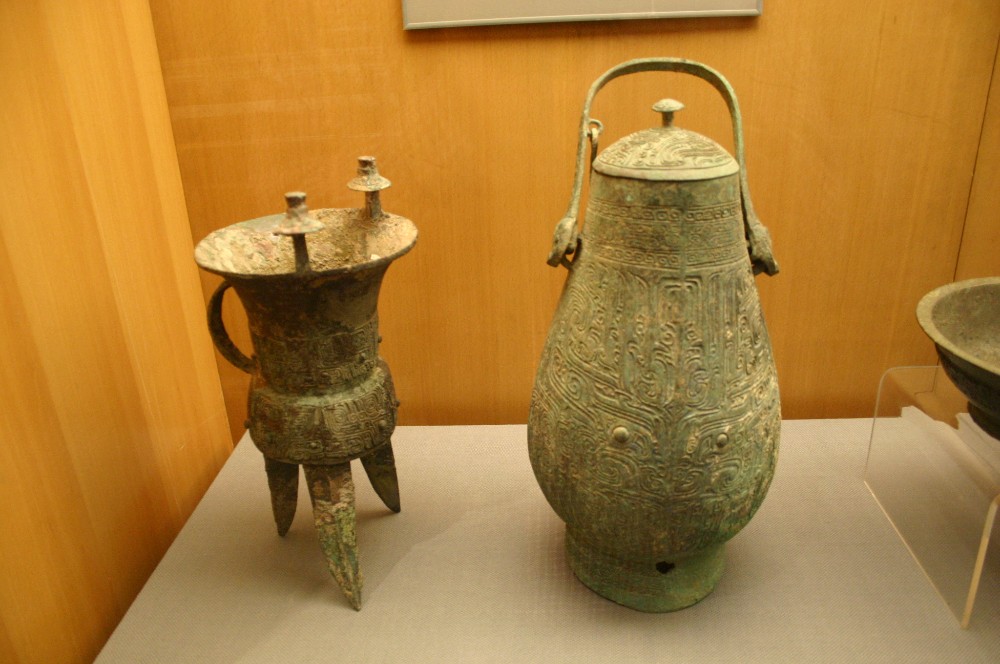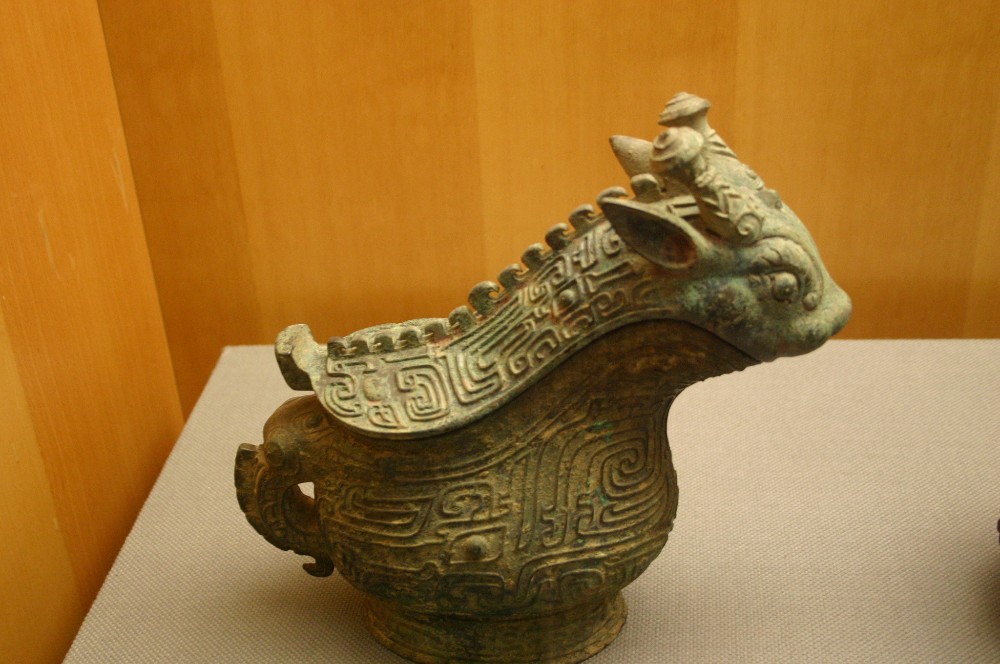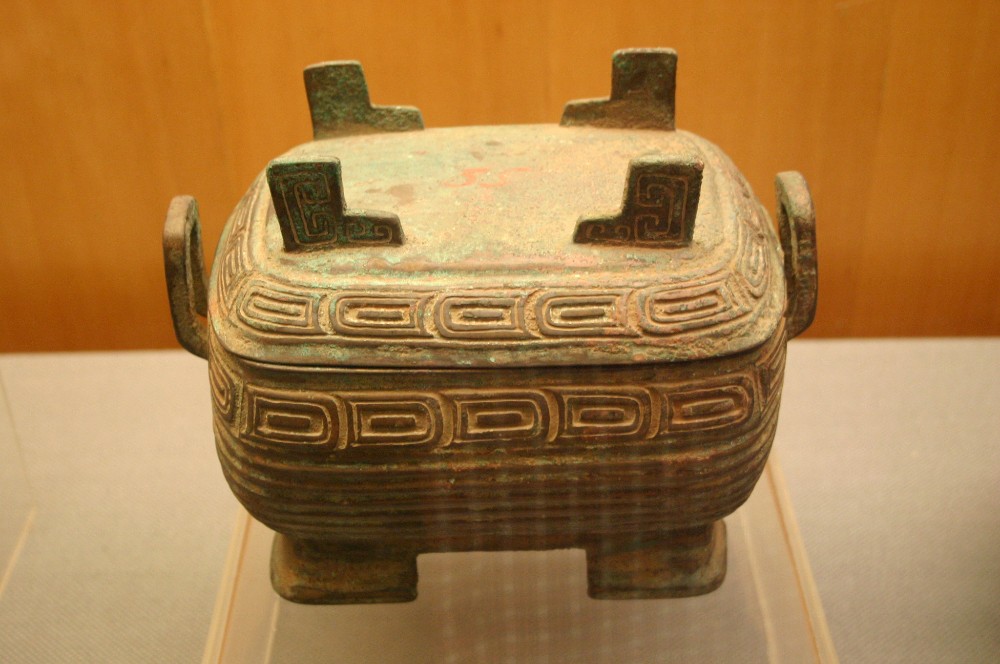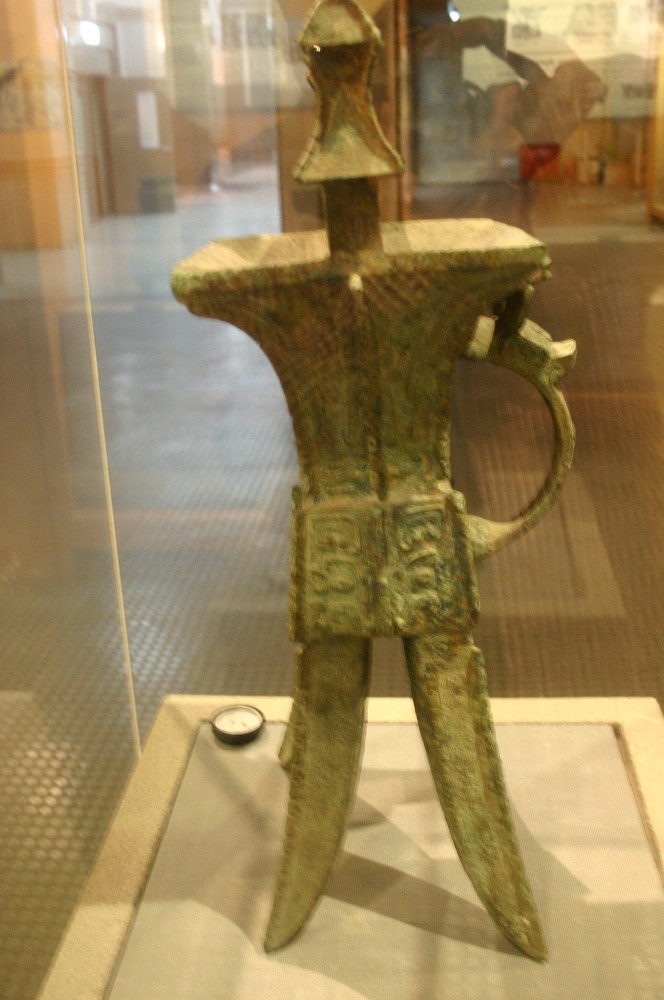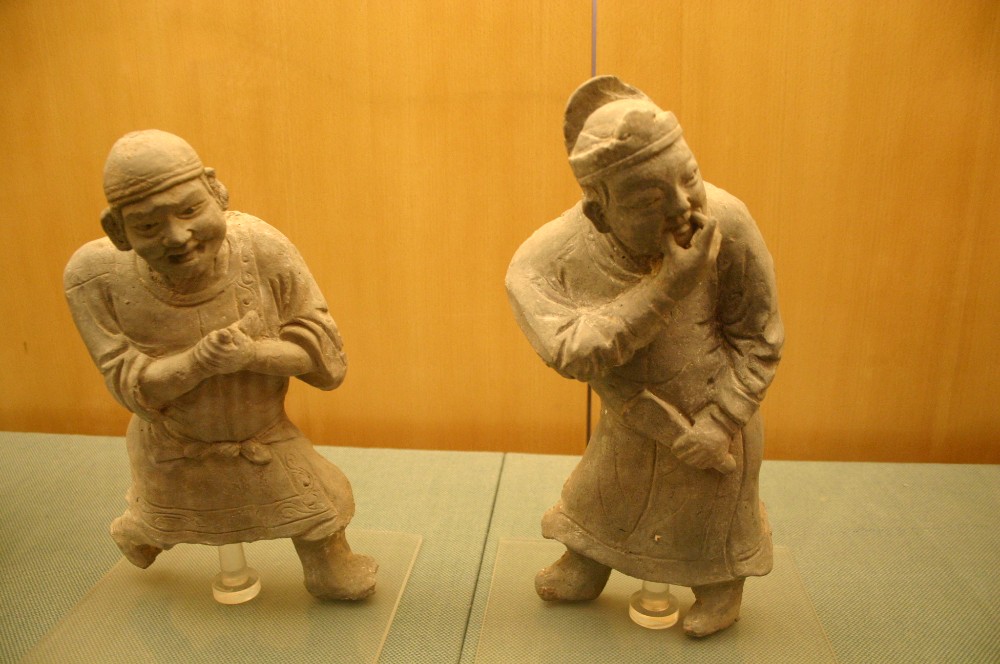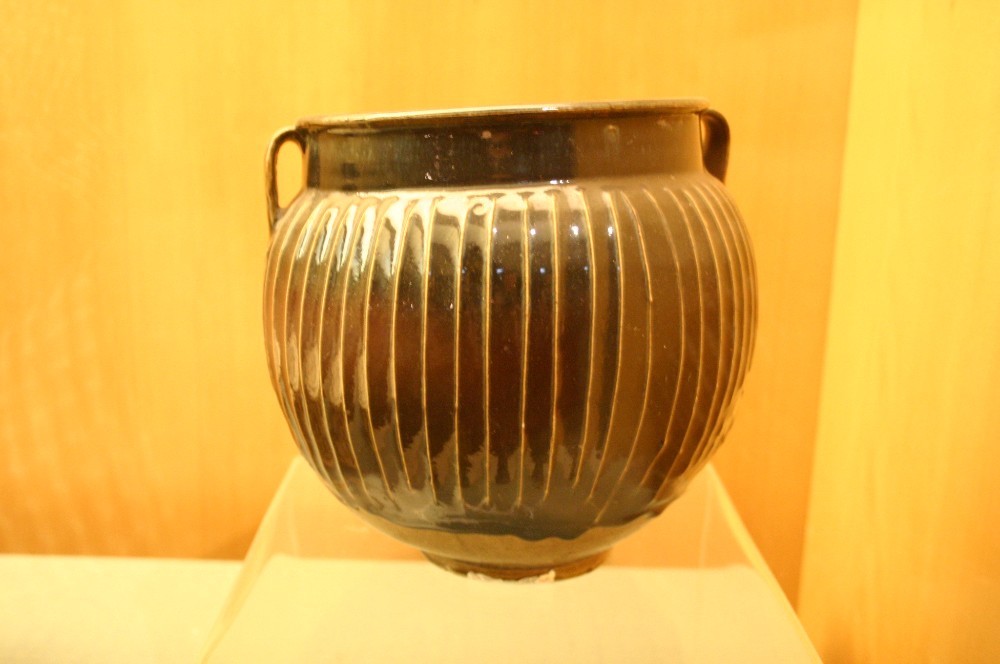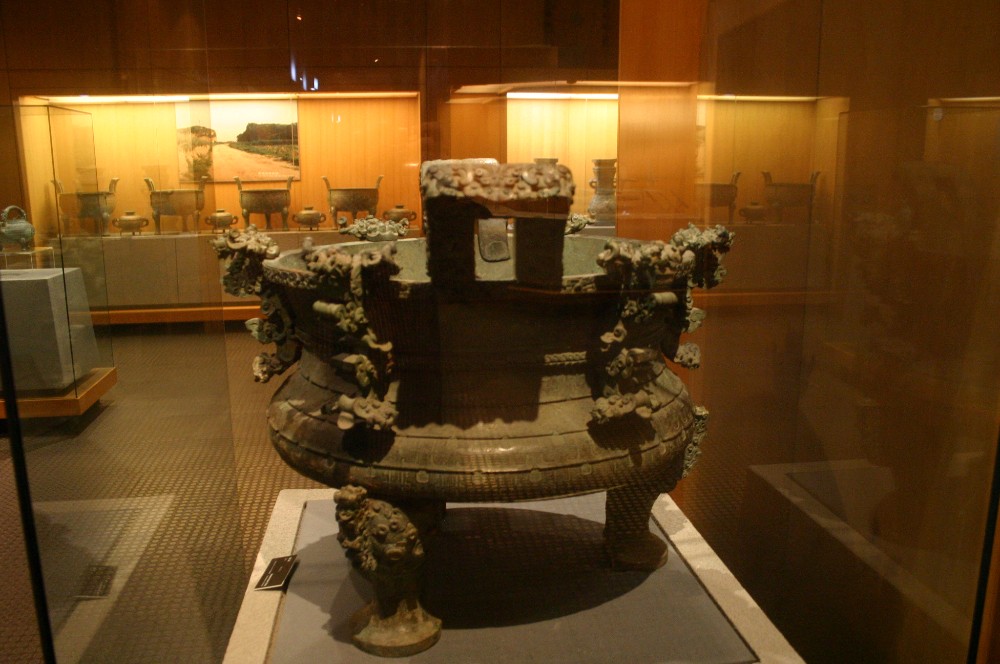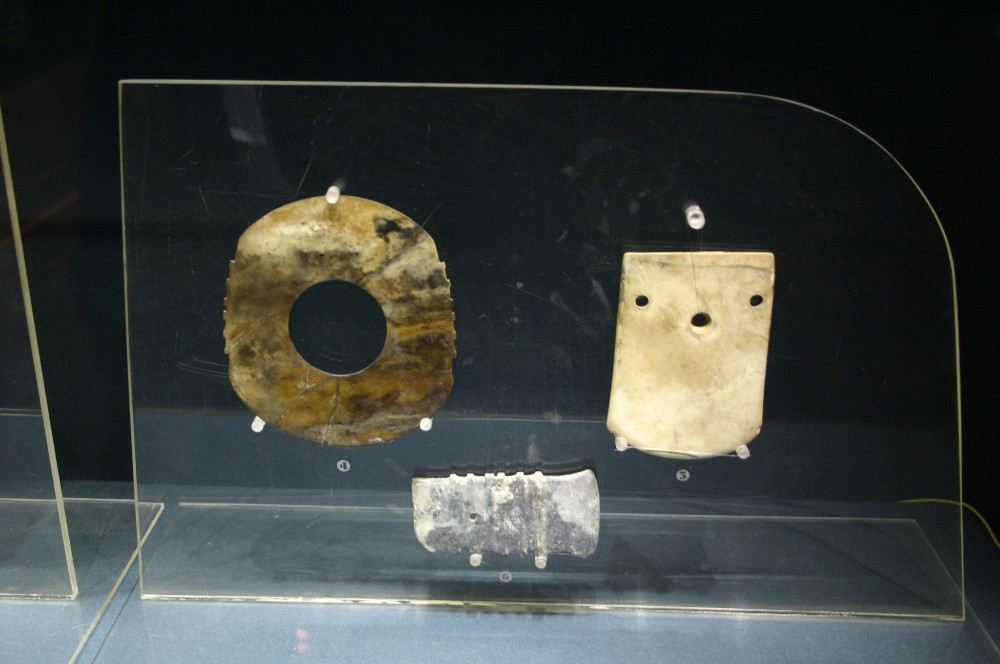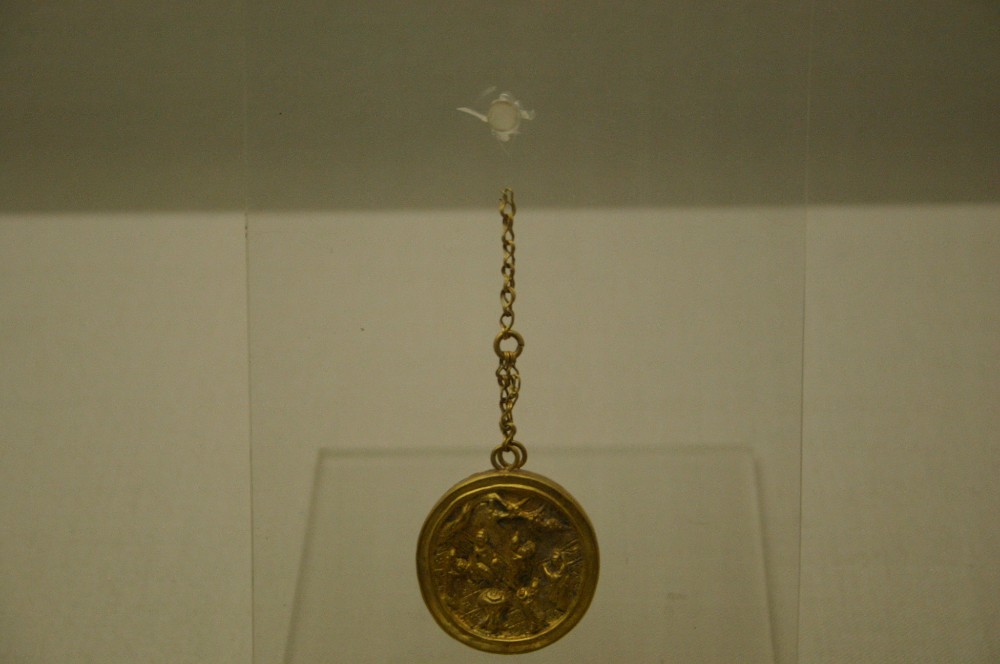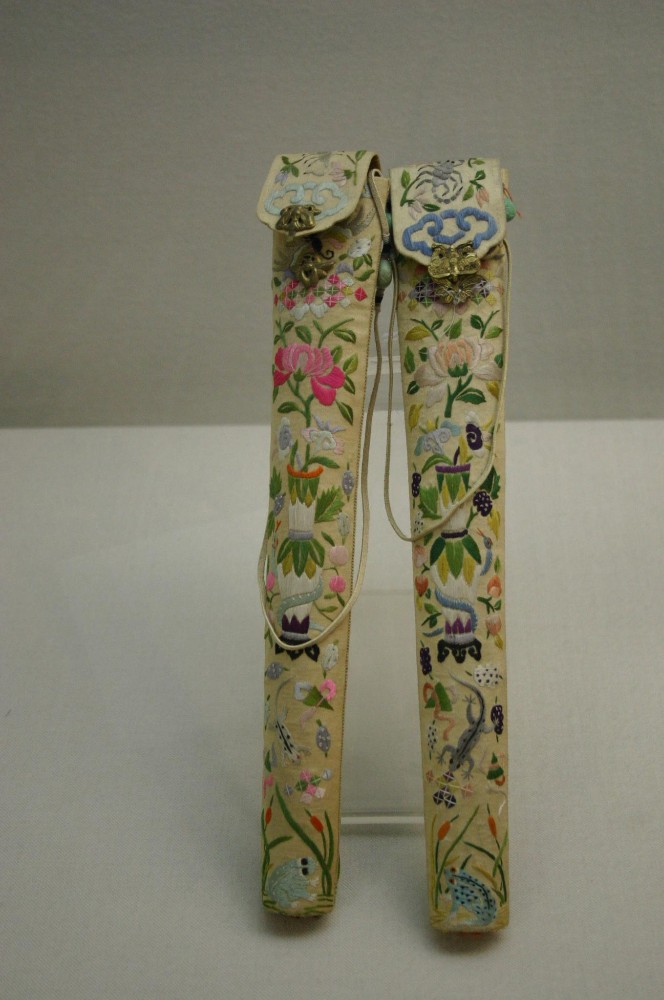Date: 2006-09-03 to 06
It was a cool rainy day, we could not visit Luoyang洛阳 and Shaolin Temple少林寺 so we changed our plane to visit this fantastic museum - 河南博物馆
Henan is located in the Yellow River valley and in a place where people of ancient times grew and developed. Earlier in the New Stone Age, the light of civilization had appeared and the delicate potteries in the Peiligang Culture and Yangshao Culture, and the character signs and musical instruments 8,000 years ago have filled the present world and the ancient times with wonders. There are seven ancient capitals in China, three of which are located in Henan: Luoyang, Kaifeng and Anyang. Henan is one of the provinces which have the most historical relics in the country. There are 16 key national units of protecting historical relics and 267 provincial units of protecting historical relics. The over-ground historical relics are the second in China. Historical relics in museums takes up one eighth of those in China. And the underground historical relics are the first in China. In Henan Museum there are 120,000 historical relics, including over 40,000 rare ones. I have visited Zhengzhou (Capital city of the province), Luoyang and Kaifeng. Originally, I planned to visit Anyang; but I had to cancel it due to train ticket from Anyang to Beijing is too hard to purchase. Zhengzhou is the intersection of two important railway arteries – Jingguang Railway (Beijing to Guangzhou; North South) and Longhai Railway (Lianyungang to Lanzhou; East West).
This group of photos are from Henan Museum. As soon as I entered the first exhibition hall, I knew I have to take photos. They do allow me to use camera but without flash. This museum is definitely one of the world's finest museums.
Henan means south of Yellow river. It is the most populous province of China. Northern Henan, along the Yellow River, was the core area of ancient China for at least the first half of Chinese history. The two cities of Luoyang and Kaifeng each served as the capital city of a long list of dynasties.
2012-12-26 Photos from Multiply.com are copied to Blogger(download -> store -> unzipped -> sorted -> upload). The process is time consumed but worth my time to do it. For the entire photos, it might take months to finish. I have downloaded all the photos and stored on my PC. I will take my time to add photos to every post under my travel.
河南博物院 Henan Museum
河南博物院(HENAN MUSEUM)创建于1927年,是中国建立较早的博物馆之一,当时馆址定在开封,1961年迁至郑州,1998年河南博物院新馆建成开放,文物藏品13万余件。
武曌金简 (武则天)
出土于中岳嵩山峻极峰,唐代早期。这是中国目前发现的唯一金简。
莲鹤方壶
春秋。1923年8月25日出土于河南省新郑城关李家楼村。为河南博物院第一批收藏品,开启了河南文物事业的先路。壶上有冠盖,器身长颈、垂腹、圈足。该壶造型宏伟气派,装饰典雅华美。壶冠呈双层盛开的莲瓣形,中间平盖上立一展翅欲飞之鹤;壶颈两侧用附壁回首之龙形怪兽为耳;器身满饰蟠螭纹,腹部四角各攀附一只立体小兽;圈足下有两个侧首吐舌的卷尾兽,倾其全力承托重器。构思新颖,设计巧妙。
云纹铜禁
春秋。出土于河南省淅川下寺2号楚墓。长方形的箱形器身由五层铜梗支撑的透雕云纹构成;禁底有12只龙形怪兽张口吐舌,有不胜重负之感;而禁的四周攀附的12条夔龙勾首伸舌,仿佛要吞饮禁上的美酒。这件造型奇妙的铜禁的出土说明,公元前591至公元前560年,中国古代工匠就已熟练地运用了称为“失蜡法”的青铜铸造工艺
贾湖骨笛
出土于舞阳贾湖裴李岗文化遗址,被誉为“中华音乐文明之源”。它是用鹤类动物的腿骨钻7个音孔制作而成。在第6孔与第7孔之间还有一个用来调节音差的小孔。经测试,用它能吹奏出七声齐备的下徵调音阶。贾湖骨笛1987年出土于河南省舞阳县贾湖遗址,贾湖骨笛是我国目前出土的年代最早的乐器实物,被称为“中华第一笛”。长23.1厘米,七孔。这支骨笛证明早在七八千年之前,我们的祖先已经发明了七声音阶。贾湖骨笛不只是中国年代最早的乐器实物,更被专家认定为世界上最早的可吹奏乐器。
河南洛阳白马寺位于河南省洛阳老城以东12公里处,创建于东汉永平十一年(68年),为中国第一古刹,世界著名伽蓝,是佛教传入中国后兴建的第一座寺院,有中国佛教的“祖庭”和“释源”之称。现存的遗址古迹为元、明、清时所留。寺内保存了大量元代夹纻干漆造像如三世佛、二天将、十八罗汉等,弥足珍贵。
广化寺
广化寺坐落在河南省洛阳市龙门村西的山岗上。始建于元魏(公元386—534年)时期。垂直高31米的寺
洛阳 龙门石窟
嵩山 少林寺
开封
开封铁塔






